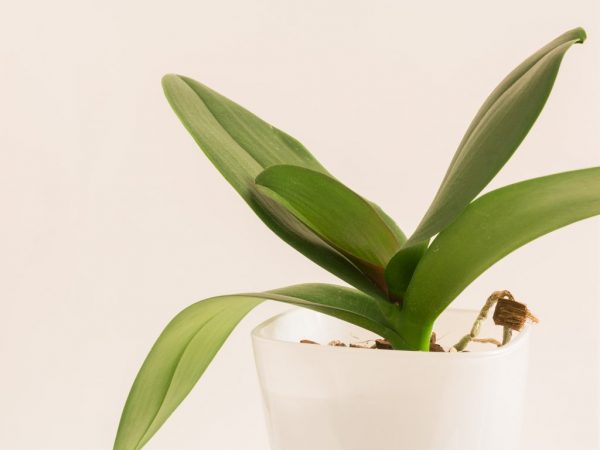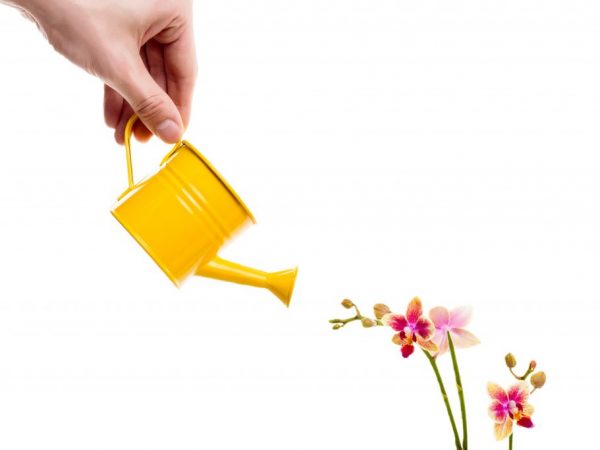When to water an orchid after transplanting
Watering an orchid after transplanting is a topical issue for flower growers who do not want to allow their favorite phalaenopsis to fade. Orchids are much more demanding to care for than other indoor plants.

Watering the orchid after transplanting
Dry transplant
For phalaenopsis, only dry transplantation is permissible, because this contributes to the speedy fixation of the plant in the new substrate. The necessary soil includes dried fibers, coniferous bark, which increases the acidity of the substrate, sphagnum moss, which absorbs excess of harmful salts and has a bactericidal effect, as well as nutshells, coconut fibers, fallen leaves, coal, expanded clay, vermiculite, etc.
Watering the orchid after transplanting
Many people are interested in the question, is it necessary to water the orchid after transplanting into another pot? Watering is necessary immediately, because the plant needs immediate supply of organic and mineral substances to overcome stress. The first watering with soft water should be abundant so that the dry and not densely filled substrate is saturated. When the plant is placed in new soil, the pot is immersed in a bowl of water with nitrogen, potassium and magnesium impurities for half an hour.
It is necessary to properly water the orchid after transplanting, because if there is an excess of moisture, the roots may begin to rot and the plant will die. To prevent irreversible processes in the root and other tissues at home, it is better to periodically examine the root system of the flower. Excess moisture should be immediately expelled through the holes. After planting the phalaenopsis, it is moved to a well-shaded place for 10 days so that the flower does not suffer from ultraviolet radiation. The second watering is carried out after 14 days, i.e. after the soil has dried. For a better observation of the processes occurring in the substrate, it will be correct to use a transparent plastic pot.
Watering frequency

Water as the soil dries
If the substrate at home has been dry for a long time, then the flower is placed in the bath in the morning and washed with warm water from the shower. If the substrate has undergone short-term drying, then the orchid should be moistened in the summer after a day, in the winter - every 3 days. Each type of flower requires a different amount of moisture, but the plants are watered as the soil dries. In the summer period, the action is performed 1-2 per week, and in the winter - 1-2 per month.
The frequency of watering depends on the lighting. The more light the phalaenopsis leaves receive, the more moisture the plant requires. But if the plant is placed in the shade, then regular and frequent moistening is absolutely not required, this will provoke destructive processes in the tissues. The level of humidity is of no less importance. The optimum microclimate is 50-70% humidity at a temperature of 25 ° -30 ° C. If there is a lack of moisture in the room, place a container with settled water.
Universal watering rules
There are certain rules on how to water an orchid after transplanting, which must be followed in order for the plant to grow and develop normally.
- Humidification of the substrate at home is carried out in the morning.
- The water should be warm, settled and soft, for which oxalic acid is used in the calculation of ½ tsp. acid per 2.5 liters of liquid. The solution is prepared a day before use, must be filtered before use. The use of untreated, cold and hard water will lead to the death of the root system.
- The optimum temperature is 30 ° -35 ° C.
- During the period of active flowering, only the root system is moistened. If the humidity is insufficient, then it will be correct to spray, while trying not to hurt the flowers. No irrigation is done during this period.
- Up to twice a month, conduct a warm shower for orchids to irrigate both the mother's body and offspring, as well as to prevent certain diseases.
- In the first watering after transplanting, top dressing and a growth stimulator are immediately included.
- Moisture should not get into the leaf sinuses, because this will lead to the death of the flowers.
- If the orchid has been in direct sunlight for a long time, then it should not be sprayed, because the risk of thermal burns increases. In winter, it is better not to use this type of moisturizing at all so that the plant does not overcool.
- Spraying is carried out at a distance of at least 20 cm.
- If the pot is placed in water, then there must be individual water for it in order to protect all plants in the house from infection with parasites and pests.
Conclusion
Compliance with the general rules will favorably affect the health and life of the home phalaenopsis, which has undergone a transplant, but it is worth remembering that orchid varieties have slightly different requirements for this procedure. You can focus directly on the moisture content of the substrate: as soon as it dries up, moisten the soil.


